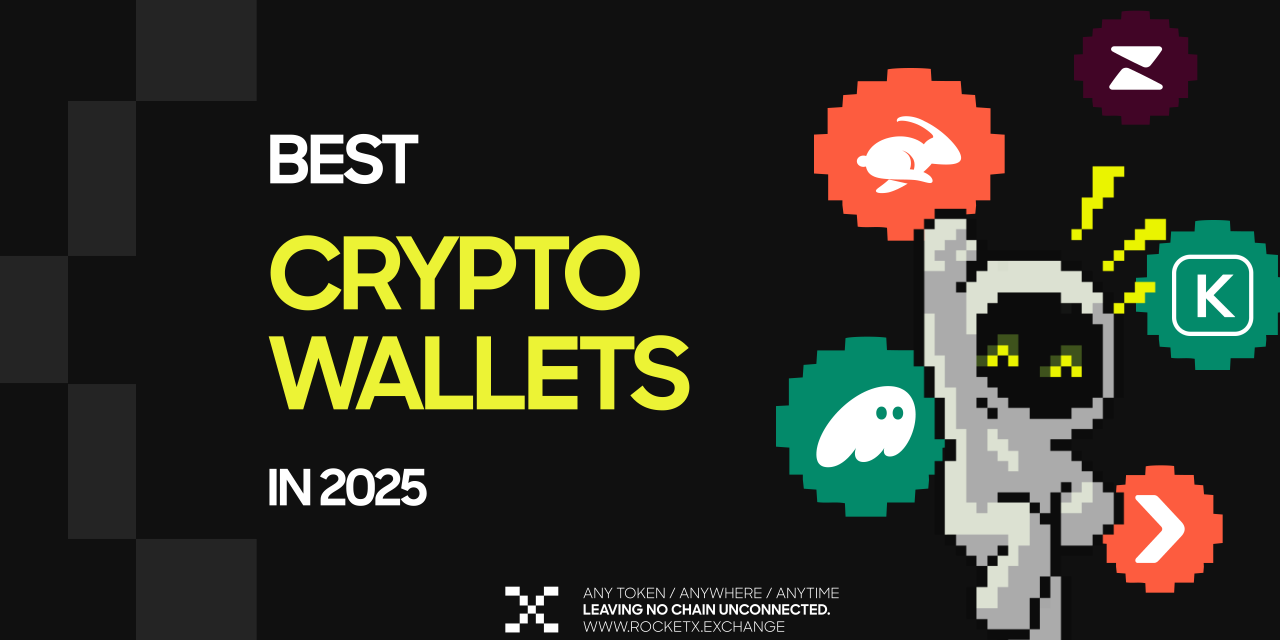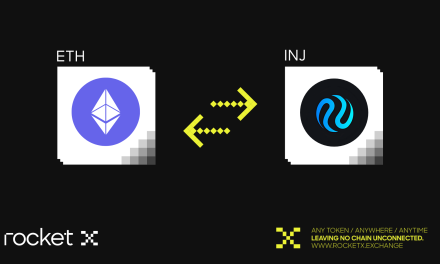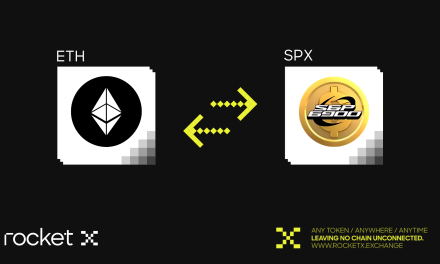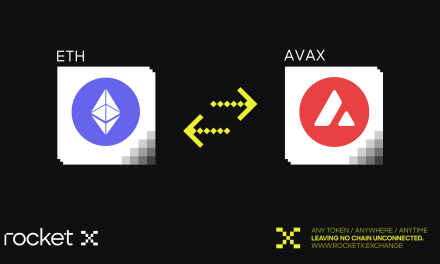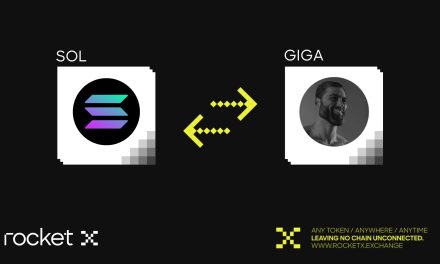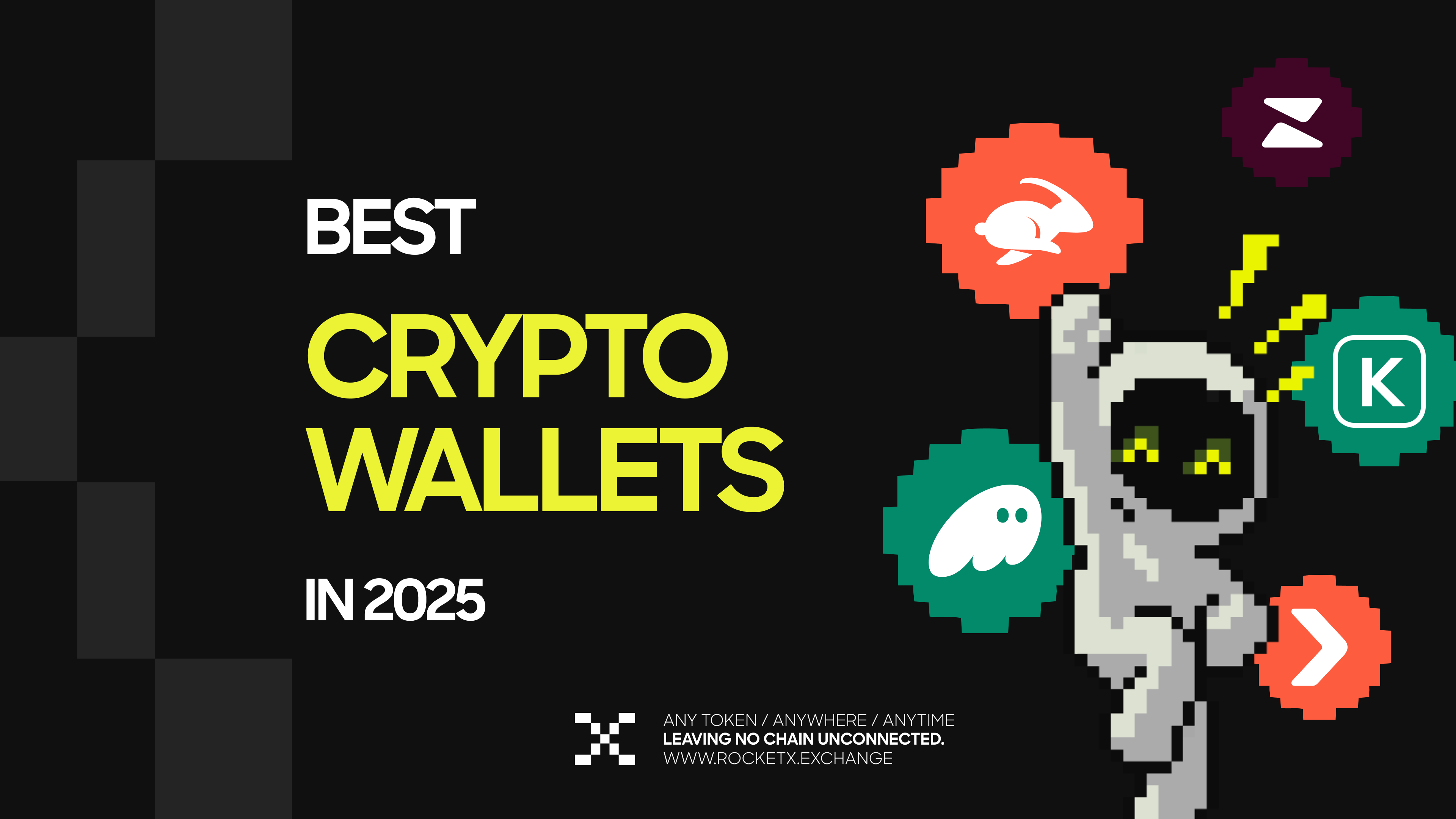
Introduction
Cryptocurrencies have transformed the way we perceive money, ownership, and access to financial services. But none of this is possible without one critical component: the crypto wallet. Whether you’re buying your first token, swapping assets cross-chain via RocketX Exchange, or minting an NFT, everything begins and ends with a wallet.
In this guide, we’ll explore what crypto wallets are, why they’re essential, how they’ve evolved, the top 5 wallets to use right now, and how to create and secure one. Finally, we’ll discuss what happens if you lose access and why your seed phrase is everything.
What Are Crypto Wallets?
A crypto wallet is a digital tool that lets you send, receive, and manage cryptocurrencies like Bitcoin, Ethereum, or SOL. Despite the name, a wallet doesn’t actually store crypto—it stores your cryptographic keys that allow you to access and control your assets on the blockchain.
Every wallet includes two keys:
- A public key (your wallet address) is used to receive funds.
- A private key, which acts like a password to authorize transactions.
Think of it as a secure interface between you and the blockchain, letting you interact with DeFi platforms, mint NFTs, vote in DAOs, and swap tokens across chains.
Crypto wallets generally fall into two categories—hot wallets and cold wallets, each serving different needs:
-
Hot Wallets (e.g., MetaMask, Phantom, Rabby): These wallets are always connected to the internet, making them ideal for frequent transactions, DeFi, and NFT interactions. They offer convenience but are more exposed to online threats.
-
Cold Wallets (e.g., Ledger, Trezor): These are offline hardware wallets designed for maximum security. Since they keep your private keys disconnected from the internet, they’re best suited for long-term storage and large holdings.
Why You Need a Crypto Wallet
A crypto wallet isn’t just a storage app—it’s your personal vault, identity, and control panel in the decentralized world. Unlike traditional banking, where a third party holds your funds, a crypto wallet empowers you to become your own bank. It’s how you store, access, and interact with your digital assets and Web3 services.
Here’s why having a wallet is non-negotiable:
- Self-Custody and Security: A wallet doesn’t hold your coins—it holds your private keys, the cryptographic proofs that grant access to your funds on the blockchain. Without a wallet, you can’t manage or secure these keys. Non-custodial wallets (where only you control the keys) ensure you’re not relying on exchanges that can be hacked or go bankrupt.
- Send & Receive Crypto: Your wallet provides a public address (like a bank account number) to receive funds, and uses your private key to authorize transactions, proving ownership.
- Access to DeFi & Web3: Your wallet is your gateway to dApps, decentralized exchanges, NFT platforms, DAOs, and DeFi protocols. It’s how you log in, trade, lend, vote, and interact in the decentralized economy—no middlemen needed.
- Enhanced Protection with Cold Wallets: For large holdings, hardware wallets (offline devices) offer maximum protection by keeping your keys away from the internet, immune to online attacks.
- Privacy & Control: While blockchain is public, wallet usage remains pseudonymous—your address isn’t tied to your real-world identity unless you choose to link it.
If you want to own, use, and explore crypto, a wallet isn’t optional—it’s essential. It gives you full control, security, and access to everything Web3 has to offer.
How Crypto Wallets Have Evolved Over Time
Crypto wallets have come a long way since Bitcoin’s birth in 2009. What started as a technical tool for developers has evolved into a seamless, user-friendly gateway to the decentralized world of Web3.
Phase 1: The Beginning – Bitcoin Core (2009)
The story begins in 2009, with Bitcoin Core—the original software created by Satoshi Nakamoto. This wasn’t just a wallet; it was a full node and miner bundled into one. Early adopters had to download the entire Bitcoin blockchain (which, at the time, was manageable), understand cryptographic key management, and run command-line interfaces.
There was no UI, no mobile support, and certainly no customer service. Managing funds requires technical skill and patience. For those who remember, it felt like running a Linux server before graphical interfaces took over.
Phase 2: More Accessible Wallets (2011–2015)
As Bitcoin gained popularity, developers began building more accessible wallets. Lightweight desktop wallets like Electrum introduced SPV (Simple Payment Verification), allowing users to interact with the blockchain without downloading the entire ledger.
Around the same time, web wallets like Blockchain.com and mobile wallets like Mycelium appeared, offering convenience at the cost of true custody, since many of them managed private keys on users’ behalf.
Paper wallets also rose in popularity during this period, allowing users to generate keys offline for cold storage. While they were considered safe from online attacks, a misplaced or damaged paper wallet meant total loss of funds.
Phase 3: Security Upgrade – Hardware Wallets (2014+)
Security became a top concern as crypto hacks and exchange breaches made headlines. Enter the hardware wallet era. Devices like Trezor (2014) and Ledger Nano (2016) introduced secure offline storage, or “cold wallets,” where private keys never touch the internet.
These USB-like devices became the gold standard for long-term holders and high-net-worth individuals. Although slightly less convenient than mobile or browser wallets, their security-first design made them a go-to solution for serious investors.
Phase 4: Web3 Integration – Smart Wallets (2015–2020)
With Ethereum’s arrival in 2015 came smart contracts, dApps, and the booming world of DeFi. Wallets needed to evolve—fast. This led to the emergence of MetaMask, a browser extension wallet that allowed users to interact with Ethereum-based dApps directly from their browser.
Other wallets like Trust Wallet, Coinomi, and Exodus followed, offering multi-chain support, built-in token swaps, NFT storage, and dApp browsers—ushering in the era of Web3.
The shift was clear: wallets were no longer just storage tools. They became portals to decentralized finance, DAOs, NFT marketplaces, and more.
Phase 5: Smarter, Safer, Simpler (2020–Present)
As Web3 adoption gains momentum, crypto wallets have entered a new era—one defined by usability, security, and interoperability. Modern crypto wallets have evolved to prioritize user experience, security, and Web3 accessibility.
Features like social recovery (using trusted contacts), seedless wallet creation via Multi-Party Computation (MPC), and biometric logins (Face ID, fingerprint) are becoming standard. Account abstraction now enables gasless transactions and programmable security, making wallets easier for non-tech users.
The Top 5 Crypto Wallets to Use in 2025
In 2025, crypto wallets have evolved far beyond simple asset storage—they’ve become all-in-one gateways to the decentralized world. From seamless cross-chain swaps and DeFi integration to NFT marketplaces, staking, and account abstraction, today’s top wallets are designed for both functionality and security. Whether you’re a DeFi power user, NFT collector, or mobile-first trader, the right wallet can unlock your full Web3 experience.
Here are the top 5 crypto wallets redefining how we interact with digital assets, chosen for their innovation, performance, and user-centric design.
1. Rabby Wallet – The Multi-Chain DeFi Maestro
Rabby Wallet is a next-gen crypto wallet tailored for advanced DeFi users operating across 100+ EVM-compatible blockchains. Built by DeBank, Rabby removes the friction of manual network switching by auto-detecting the chain based on the dApp you visit. With DeBank’s deep analytics integration, Rabby delivers a real-time portfolio dashboard, transaction simulations, gas account support, and pre-signing alerts for enhanced security. Available as both a browser extension and mobile app, Rabby is open-source, regularly audited, and compatible with major hardware wallets—making it one of the most trusted tools in the Web3 space.
Supported Chains: 100+ EVM networks including Ethereum, Arbitrum, Optimism, zkSync, Base, Linea, and more
Best for: DeFi veterans and multichain explorers looking for seamless chain switching, accurate transaction previews, gasless operations, and bulletproof wallet security through biometric auth and hardware wallet support.
Watch the Tutorial:
👉 How to Use Rabby Wallet for DeFi & Cross-Chain Swaps
2. Phantom Wallet – The NFT and Solana Powerhouse
Phantom started as a Solana-only wallet but has expanded to support major EVM chains. It features a clean interface, built-in NFT gallery, spam-NFT burn tool, and one-click staking. It is available as a browser extension and mobile app, offering smooth onboarding and secure recovery.
Supported Chains: Solana, Ethereum, Arbitrum, Optimism, Base
Best for: NFT collectors and Solana-native users looking for speed, simplicity, and built-in tools like NFT rarity data, spam burn, QR sync between devices, and support for hardware wallets.
Watch the Tutorial:
👉 How to Set Up and Use Phantom Wallet
3. Zerion Wallet – The Web3 Portfolio Powerhouse
Zerion Wallet is more than just a wallet—it’s a full-featured crypto dashboard designed for active Web3 users. Whether you’re tracking your portfolio, swapping tokens, or diving into DeFi and NFTs, Zerion puts every asset across every chain at your fingertips. It unifies wallet access, DeFi activity, NFT holdings, and transaction history with human-readable clarity. With its sleek browser extension and mobile app, users can bridge, swap, and interact with dApps in one tap, while maintaining full self-custody and Ledger support.
Supported Chains: Ethereum, Solana, Arbitrum, Optimism, Polygon, zkSync, Base, BNB Chain, Gnosis, Avalanche, and 50+ others
Best for: DeFi power users and multichain investors who want real-time portfolio insights, gasless logins (Apple/Google), and seamless access to DeFi, NFTs, and dApps—all with Zerion’s unmatched UX.
4. Keplr Wallet – The Cosmos DeFi & IBC Specialist
Keplr Wallet is the go-to wallet for the Cosmos ecosystem. It offers access to over 50+ IBC-enabled chains like Osmosis, Celestia, Akash, and more. Keplr enables staking, governance, cross-chain transfers, and dApp integrations within the Cosmos Hub. With Ledger support and an intuitive UI, it remains a favorite for users exploring the interchain future.
Supported Chains: Cosmos, Osmosis, Akash, Secret Network, Crescent, Stargaze, Injective, and 50+ IBC chains
Best For: Cosmos ecosystem explorers, DeFi stakers, and those leveraging IBC for fast and gas-efficient interoperability.
5. Bitget Wallet (formerly BitKeep) – The Feature-Rich Mobile All-Rounder
Bitget Wallet is a user-friendly, feature-packed mobile and browser extension wallet tailored for today’s crypto lifestyle. Supporting 130+ blockchains, it lets users buy, swap, and stake millions of tokens seamlessly across networks like Ethereum, Solana, Sui, Aptos, Cosmos, TON, and Base. With integrated DEX liquidity, one-click cross-chain swaps, real-time portfolio tracking, and auto-earning features, Bitget brings the full DeFi experience to your fingertips. It also unlocks access to NFT marketplaces, airdrops, DeFi launchpads, and Web3 DApps—all within one clean, secure interface.
Supported Chains: 130+, including Ethereum, Solana, Sui, Aptos, Cosmos, TON, Base.
Best for: Users who want an all-in-one wallet for trading, earning, and exploring Web3 securely and effortlessly.
The crypto wallet landscape is saturated with choices, but not all wallets are created equal. We’ve carefully selected Rabby, Phantom, Zerion, Keplr, and Bitget Wallet because they lead the pack in five critical areas: multi-chain interoperability, DeFi integration, NFT support, next-gen security, and exceptional mobile/web usability. Each of these wallets is designed to meet the evolving demands of crypto users in 2025—whether you’re farming airdrops, swapping across chains, managing NFTs, or staking assets, these wallets unlock the full potential of Web3 and empower you to navigate the decentralized world smarter, faster, and safer. These wallets don’t just store assets—they enable users to interact with the decentralized internet in smarter, safer, and more seamless ways.
How to Create a Crypto Wallet
Crypto wallets are your key to securely storing and interacting with cryptocurrencies, NFTs, and DeFi protocols. Whether you’re using Phantom, Rabby, Bitget, or Zerion, the core setup process is quite similar.
Step 1: Download from Official Sources:
There are dozens of fake wallet apps designed to steal your funds. Always download wallets only from their official websites or verified app stores like Google Play or the Apple App Store.
Step 2: Create a New Wallet:
After installing the wallet app and opening it for the first time, tap on “Create New Wallet. You’ll be shown a 12-word seed phrase, also called a recovery phrase. This phrase is the master key to your wallet and everything in it—treat it like gold.
-
Write the seed phrase down on paper or store it using a fireproof metal backup for long-term safety.
-
Never save it digitally—avoid taking screenshots, storing it in cloud services (like Google Drive), or saving it in your phone’s Notes app.
-
After noting your seed phrase, you’ll be asked to verify it by selecting the words in the correct order. This ensures you’ve backed it up correctly.
Step 3: Set a Strong Password:
Now, set a password for local access to your wallet. This is different from your seed phrase and is used to unlock the wallet interface.
- Choose a strong, unique password (at least 8 characters) combining letters, numbers, and symbols.
- This password protects your wallet on your device, but losing this doesn’t lock you out permanently (as long as you have your seed phrase).
That’s it! You’ve successfully created a wallet. If you ever log out, switch devices, or lose your phone, just use your seed phrase to import the wallet again.
Want to see in action?
We’ve created a step-by-step video tutorial on how to create a MetaMask wallet. Watch it here:
How to Create a MetaMask Wallet (YouTube Guide)
This video walks you through the process of creating a crypto wallet visually—perfect for beginners who prefer learning by watching. Don’t forget to like, comment, and subscribe for more crypto tutorials!
How to Secure Your Wallet & Seed Phrase
Once you’ve successfully created your crypto wallet, storing your seed phrase securely becomes the most important step. This 12- or 24-word recovery phrase is not just a backup—it’s your master key to the wallet and all its assets.
In the world of self-custody, your seed phrase is your Web3 identity. Anyone who gains access to it can take full control of your funds, NFTs, and DeFi positions. There’s no reset button, no “forgot password” option—if you lose your seed phrase, you lose access forever.
Best Practices to safeley store your seed phrase:
- Write it down and store it offline (never take a screenshot)
- Use a steel recovery plate for durability and fire resistance
- Keep it in a fireproof safe or a trusted bank locker
- Never share it—not even with so-called “support” teams
What Happens If You Lose Your Seed Phrase?
- Lost your phone or laptop? No worries—just restore using your seed phrase
- Deleted your wallet app? Again, restore with the seed phrase
- Lost your seed phrase? Unfortunately, your funds are gone permanently
This is the price of true ownership: no middlemen, but no second chances either.
Final Thoughts: Your Wallet, Your Web3 Passport
A crypto wallet isn’t just a tool—it’s your all-access pass to the decentralized world. From unlocking DeFi opportunities and NFT marketplaces to farming airdrops and executing cross-chain swaps, your wallet is the bridge between you and everything Web3 has to offer.
While we didn’t include a specific wallet setup example, the same principles apply to any crypto wallet. The key? Set it up right. Back up your seed phrase securely, enable all security layers, and never share sensitive information.
And when you’re ready to trade across networks, RocketX Exchange makes it effortless. With support for 200+ chains, you can connect any wallet—or even swap without one using walletless mode—and dive into seamless, secure crypto trading.
Your wallet is more than storage—it’s your identity, your freedom, and your future.
So take control, stay protected, and explore Web3 on your terms.

